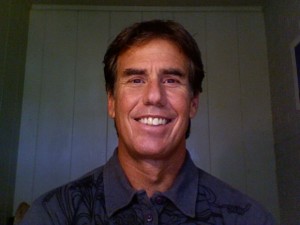
11 Apr Earth Matters: Climate Change Reality 1896-2013: Mauka to Makai
In 1896, approximately 150 years after the dawn of the industrial revolution began to disrupt Earth’s natural energy balance, Nobel Laureate chemist Svante Arrhenius theorized that carbon dioxide (CO2) derived from fossil fuel combustion induced atmospheric global warming. Nonetheless, it took another 62 years before Dr. Charles David Keeling established the Mauna Loa Observatory on the Big Island of Hawaii, an atmospheric monitoring site, and provided direct evidence that the concentration of CO2, a greenhouse gas, was indeed increasing. As of July 2013, the observed concentration levels of CO2 in the atmosphere have increased from 315 ppm in 1958 to 397.23 ppm.
Compounding the problem, studies indicate that methane (CH4) and other greenhouse gases generated by human activities such as large-scale industrial food production and inefficient waste management have also contributed to global atmospheric warming. Americans currently waste approximately 55 tons of food per year during the process of food production, transport, and waste disposal. This equates to about 135 tons of methane (CH4) emitted into the atmosphere or about 1.5 percent of the total human-induced greenhouse gases. As of 2012, concentration levels of CH4 in the atmosphere have been increasing at a faster rate than CO2 emissions.
As a result, between 1896 and 2012, the global surface temperatures have risen approximately 0.80 C. If the level of CO2 concentration in the atmosphere continues to climb and reaches 450 ppm, the Earth’s surface temperature could potentially increase an additional 20 C by the year 2100. However, if the atmospheric concentrations of human-induced CH4 and other greenhouse gases also continue to increase then the global rise in temperature in the year 2100 could be even higher.
Confirmation of the past 116 years of peer-reviewed scientific research, the Intergovernmental Panel on Climate Change 2013 report proclaims:
“It is extremely likely [95 percent confidence] more than half of the observed increase in global average surface temperature from 1951 to 2010 was caused by the anthropogenic increase in greenhouse gas concentrations and other anthropogenic forcings together.”
The question now is not whether human activities have caused global climate change, but are we willing to address the problem. In 2012, the international DARA “Climate Vulnerability Monitor” report revealed that approximately 4,975,000 humans died in 2010 because of climate change related impacts and our carbon-intensive energy system. On top of that, climate change and carbon-intensive systems cost the world economy about 1,238 trillion (U.S. dollars) in damages. The DARA report has also determined that the number of human deaths on a global-scale will increase to 5,957,000 by 2030.
Throughout the Hawaiian archipelago, climate change related impacts have degraded and transformed our environment and human health from the Mauka (Mountainside) to the Makai (Oceanside).
Rising surface land temperatures caused by anthropogenic climate change have allowed disease-carrying mosquitoes to migrate to the higher elevation forests, which were the last remaining refuge for the 18 or 19 out of 55 Hawaiian honeycreepers that still exist. Native plants will also suffer, as invasive species well adapted to warmer, lower elevations are able to migrate upslope as average surface temperatures rise. Likewise, increasing ocean surface temperatures induced by global atmospheric warming account for 50% of global sea-level rise due to thermal expansion of the seawater. In conjunction with melting ice sheets and glaciers, the sea level is projected to rise approximately 3.28 feet by 2100. Consequently, many residents are watching their homes crumble into the sea and the beaches disappear due to escalated coastal erosion. Compounding the problem, acidification of the seawater caused by the ocean absorbing CO2 from the atmosphere affects the coral reefs’ ability to grow its carbonate skeleton, which leads to a decline of ocean biodiversity.
On a positive note, this life-threatening global problem caused by human-induced climate change is solvable. As mentioned in another of my articles, “The Future of Sustainability in Hawai’i,” the framework for addressing the cause of climate change and related impacts at the state-level has been identified in numerous documents such as the 2050 Hawaii Sustainability Plan, the 2008 Hawaii Clean Energy Initiative, the Hawaii Coastal Zone Management Program, and the Papahānaumokuākea Marine National Monument Plan. At the local level, individuals can address climate change by getting involved with local advocacy organizations that support implementing climate change policies and by reducing their personal carbon footprint.
In recognition of Hawaii’s efforts to address climate change, Governor Neil Abercrombie was appointed by President Barack Obama to serve on the President’s task force on Climate Preparedness and Resilience. This tremendous honor and responsibility puts Hawai’i in the international media limelight and affords local communities in Hawai’i to lead the world by example.
Editor’s note: Earth Matters is largely penned by Billy Mason, an environmental studies instructor at Prescott College who focuses on environmental policy and climate change planning. He is also an environmental science writer, a Climate Reality Project leader, and a sustainability coordinator. Billy is an alumnus of the University of Hawai’i at Hilo, Prescott College, and the Clinton Global Initiative University, He serves as a researcher for the Aspen Global Change Institute and as a science instructor at the Mokupapapa Discovery Center in Hawai’i. An accomplished mountaineer, aviator, and surfer who has worked around the world from Telluride to Sri Lanka, Billy has manifested a personal connection with nature’s elements and a diversity of cultures.





Sorry, the comment form is closed at this time.